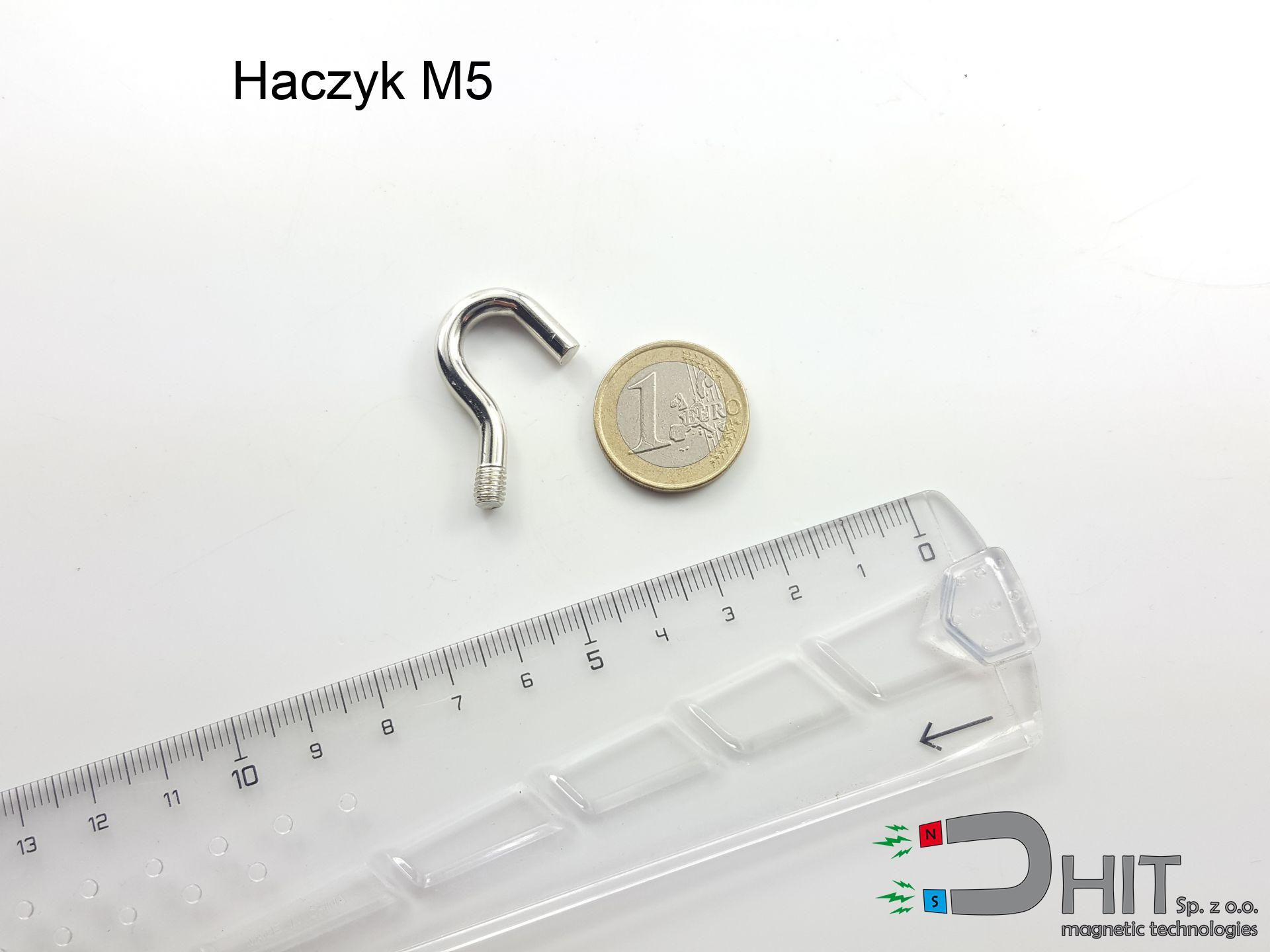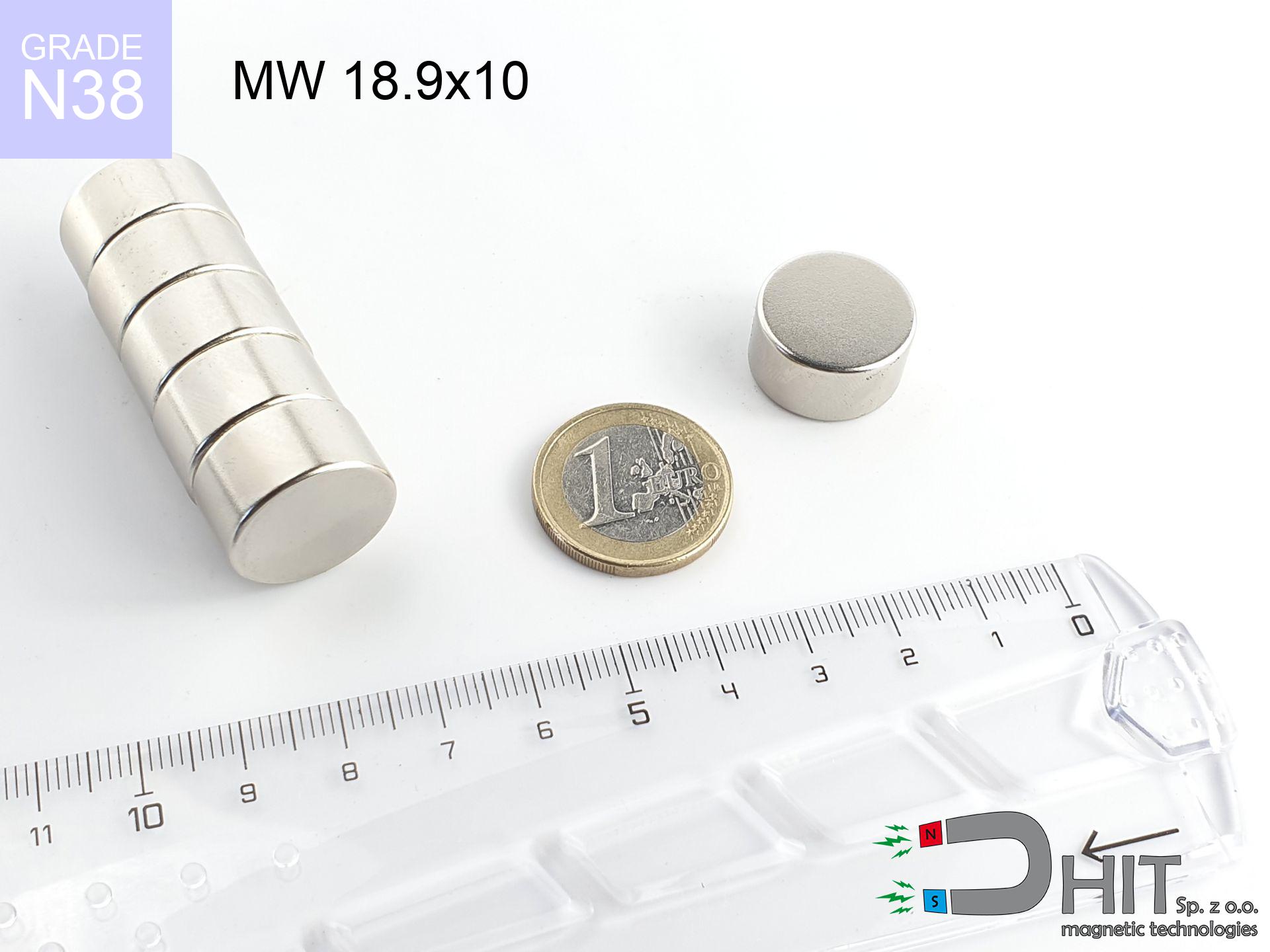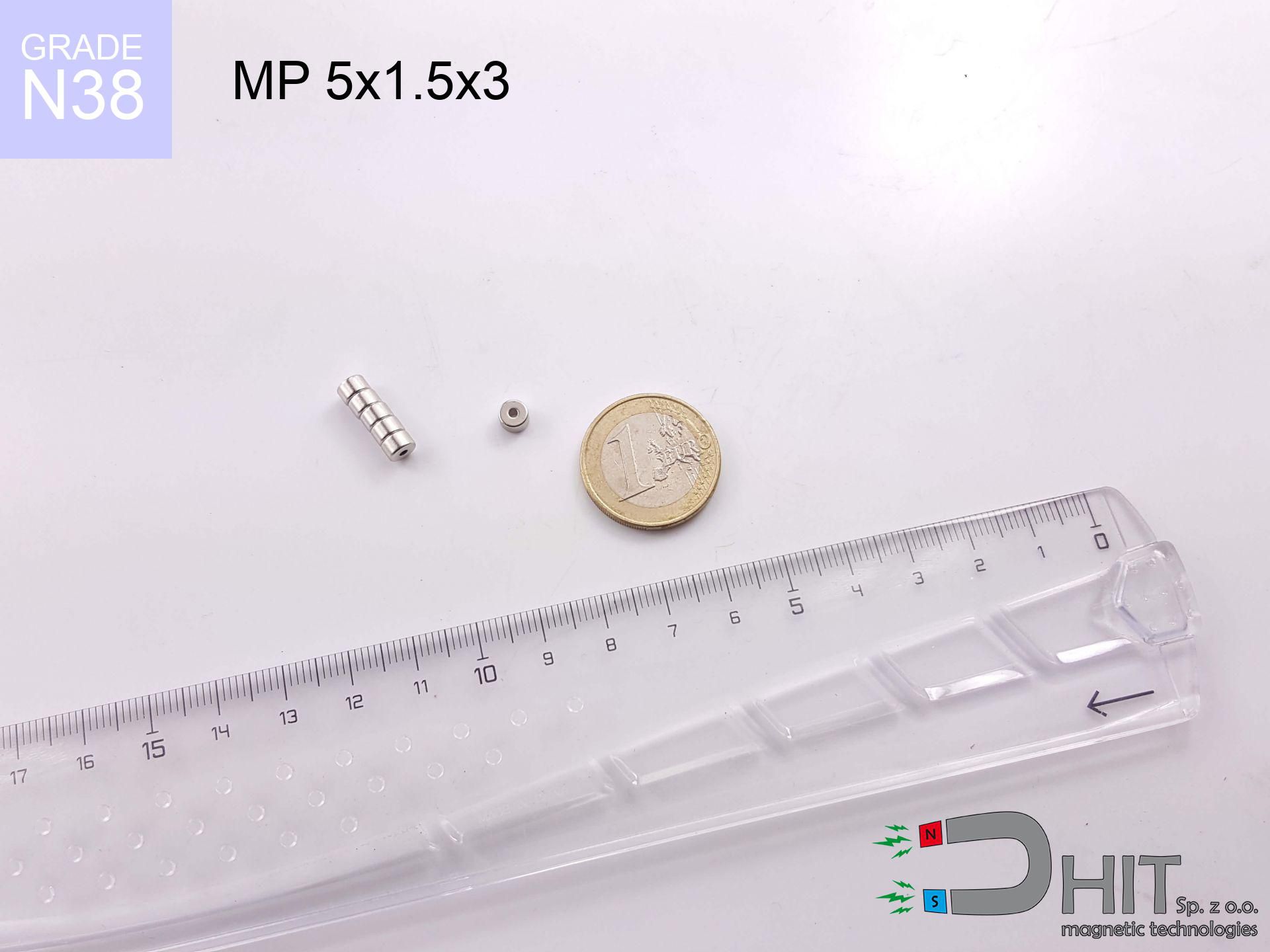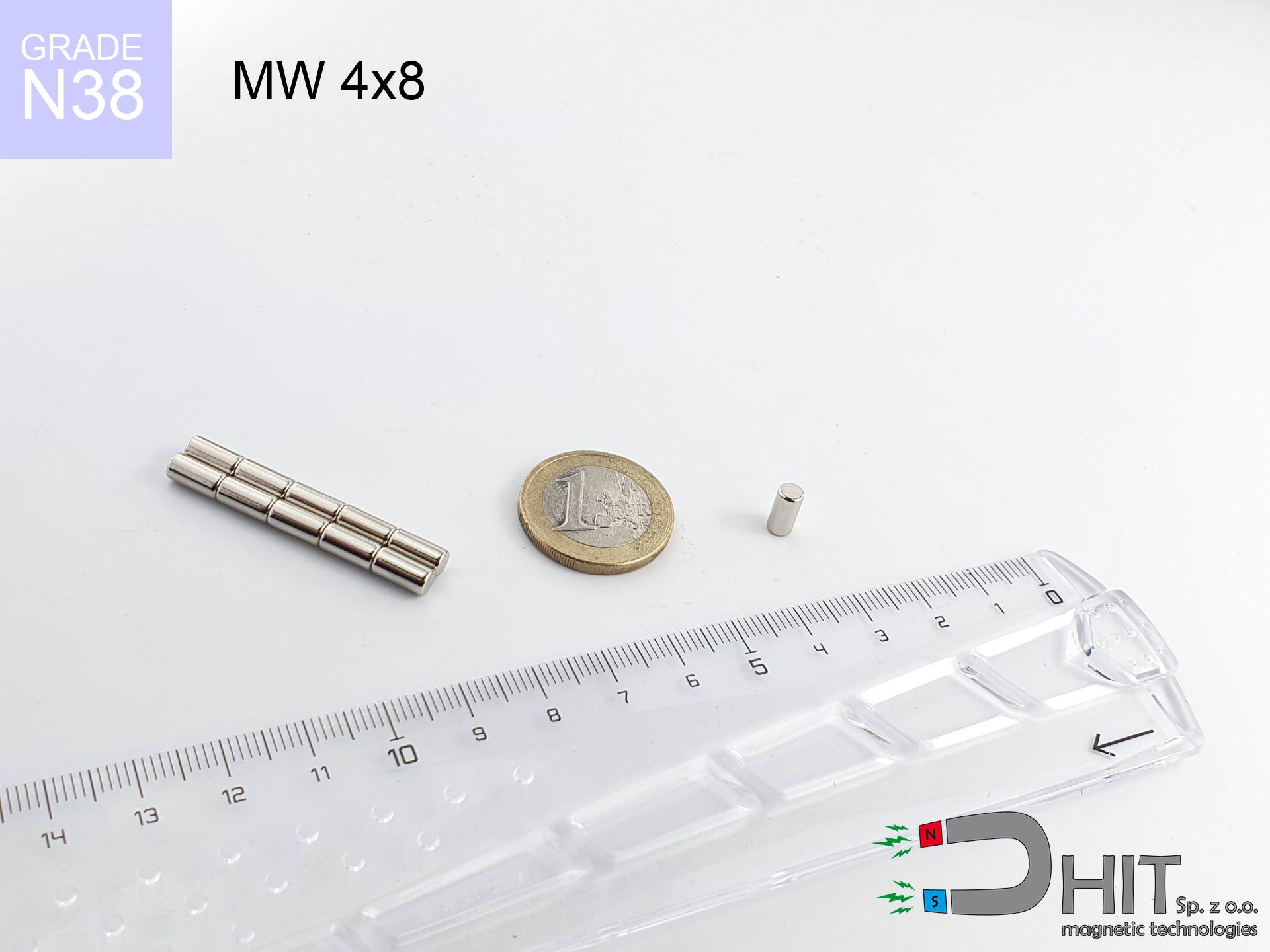AM Haczyk M5 - magnetic accessories
magnetic accessories
Catalog no 080506
Coating
[NiCuNi] nickel
1.230 ZŁ with VAT / pcs + price for transport
1.000 ZŁ net + 23% VAT / pcs
bulk discounts:
Need more?Need advice?
Give us a call
+48 888 99 98 98
if you prefer send us a note via
form
the contact section.
Strength as well as appearance of a neodymium magnet can be calculated with our
modular calculator.
Same-day shipping for orders placed before 14:00.
Magnetic properties of material
Physical properties of sintered neodymium magnets Nd2Fe14B at 20°C
Shopping tips
Advantages and disadvantages of rare earth magnets.
In addition to their magnetic efficiency, neodymium magnets provide the following advantages:
- They have stable power, and over around ten years their performance decreases symbolically – ~1% (according to theory),
- They do not lose their magnetic properties even under external field action,
- Thanks to the reflective finish, the plating of nickel, gold, or silver gives an elegant appearance,
- The surface of neodymium magnets generates a maximum magnetic field – this is one of their assets,
- Through (adequate) combination of ingredients, they can achieve high thermal strength, allowing for functioning at temperatures approaching 230°C and above...
- Thanks to freedom in designing and the capacity to customize to complex applications,
- Key role in innovative solutions – they are commonly used in HDD drives, electromotive mechanisms, advanced medical instruments, also industrial machines.
- Compactness – despite small sizes they generate large force, making them ideal for precision applications
What to avoid - cons of neodymium magnets and proposals for their use:
- They are prone to damage upon heavy impacts. To avoid cracks, it is worth protecting magnets in a protective case. Such protection not only shields the magnet but also improves its resistance to damage
- Neodymium magnets decrease their power under the influence of heating. As soon as 80°C is exceeded, many of them start losing their force. Therefore, we recommend our special magnets marked [AH], which maintain stability even at temperatures up to 230°C
- When exposed to humidity, magnets usually rust. For applications outside, it is recommended to use protective magnets, such as magnets in rubber or plastics, which secure oxidation as well as corrosion.
- We suggest a housing - magnetic mount, due to difficulties in producing threads inside the magnet and complex shapes.
- Potential hazard resulting from small fragments of magnets can be dangerous, if swallowed, which becomes key in the aspect of protecting the youngest. It is also worth noting that small elements of these devices are able to disrupt the diagnostic process medical when they are in the body.
- With mass production the cost of neodymium magnets can be a barrier,
Maximum lifting force for a neodymium magnet – what contributes to it?
The load parameter shown represents the limit force, obtained under optimal environment, meaning:
- using a sheet made of mild steel, serving as a circuit closing element
- possessing a thickness of minimum 10 mm to ensure full flux closure
- with an ideally smooth touching surface
- with total lack of distance (without paint)
- during detachment in a direction perpendicular to the mounting surface
- at conditions approx. 20°C
Determinants of lifting force in real conditions
In practice, the real power is determined by a number of factors, ranked from the most important:
- Clearance – existence of any layer (paint, tape, air) interrupts the magnetic circuit, which lowers capacity steeply (even by 50% at 0.5 mm).
- Force direction – note that the magnet holds strongest perpendicularly. Under shear forces, the holding force drops significantly, often to levels of 20-30% of the nominal value.
- Substrate thickness – to utilize 100% power, the steel must be adequately massive. Thin sheet restricts the attraction force (the magnet "punches through" it).
- Material composition – not every steel reacts the same. Alloy additives weaken the interaction with the magnet.
- Base smoothness – the smoother and more polished the surface, the larger the contact zone and higher the lifting capacity. Unevenness creates an air distance.
- Thermal conditions – neodymium magnets have a sensitivity to temperature. When it is hot they are weaker, and in frost gain strength (up to a certain limit).
* Lifting capacity was measured by applying a polished steel plate of suitable thickness (min. 20 mm), under perpendicular pulling force, in contrast under shearing force the load capacity is reduced by as much as 5 times. In addition, even a minimal clearance {between} the magnet’s surface and the plate reduces the lifting capacity.
Safe handling of neodymium magnets
Eye protection
Protect your eyes. Magnets can explode upon uncontrolled impact, ejecting sharp fragments into the air. Eye protection is mandatory.
Serious injuries
Protect your hands. Two large magnets will join instantly with a force of several hundred kilograms, crushing anything in their path. Exercise extreme caution!
Do not drill into magnets
Fire hazard: Rare earth powder is highly flammable. Avoid machining magnets without safety gear as this may cause fire.
Skin irritation risks
Allergy Notice: The nickel-copper-nickel coating consists of nickel. If skin irritation occurs, immediately stop working with magnets and wear gloves.
Swallowing risk
Absolutely keep magnets out of reach of children. Choking hazard is significant, and the effects of magnets connecting inside the body are very dangerous.
Heat sensitivity
Monitor thermal conditions. Heating the magnet above 80 degrees Celsius will permanently weaken its properties and strength.
Handling rules
Handle magnets with awareness. Their huge power can shock even professionals. Be vigilant and respect their power.
Threat to navigation
A powerful magnetic field negatively affects the operation of compasses in smartphones and GPS navigation. Do not bring magnets near a smartphone to prevent breaking the sensors.
Protect data
Do not bring magnets near a wallet, computer, or TV. The magnetic field can permanently damage these devices and erase data from cards.
Life threat
People with a ICD have to keep an safe separation from magnets. The magnetism can stop the functioning of the life-saving device.
Caution!
Learn more about risks in the article: Magnet Safety Guide.






![UMP 75x25 [M10x3] GW F200 GOLD DUAL / N42 - search holder UMP 75x25 [M10x3] GW F200 GOLD DUAL / N42 - search holder](https://cdn3.dhit.pl/graphics/products/ump-75x25-m10x3-gw-f200-gold-dual-xoc.jpg)

